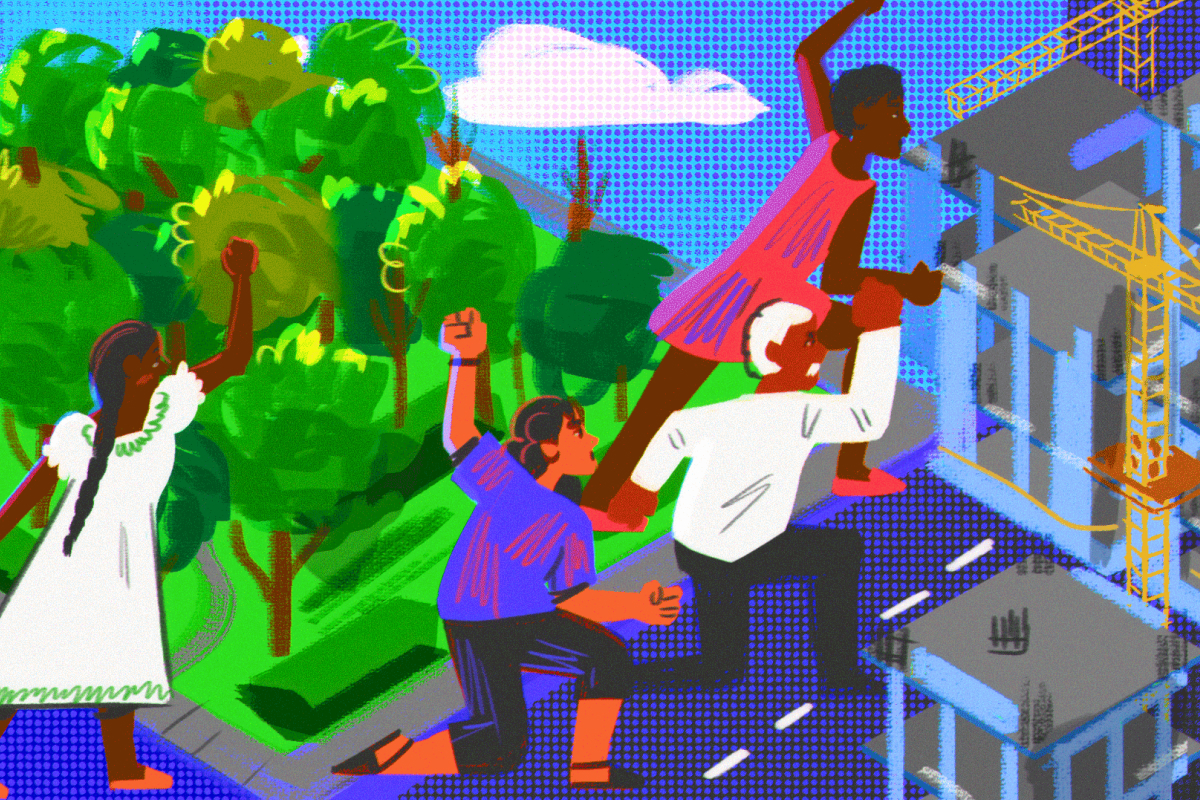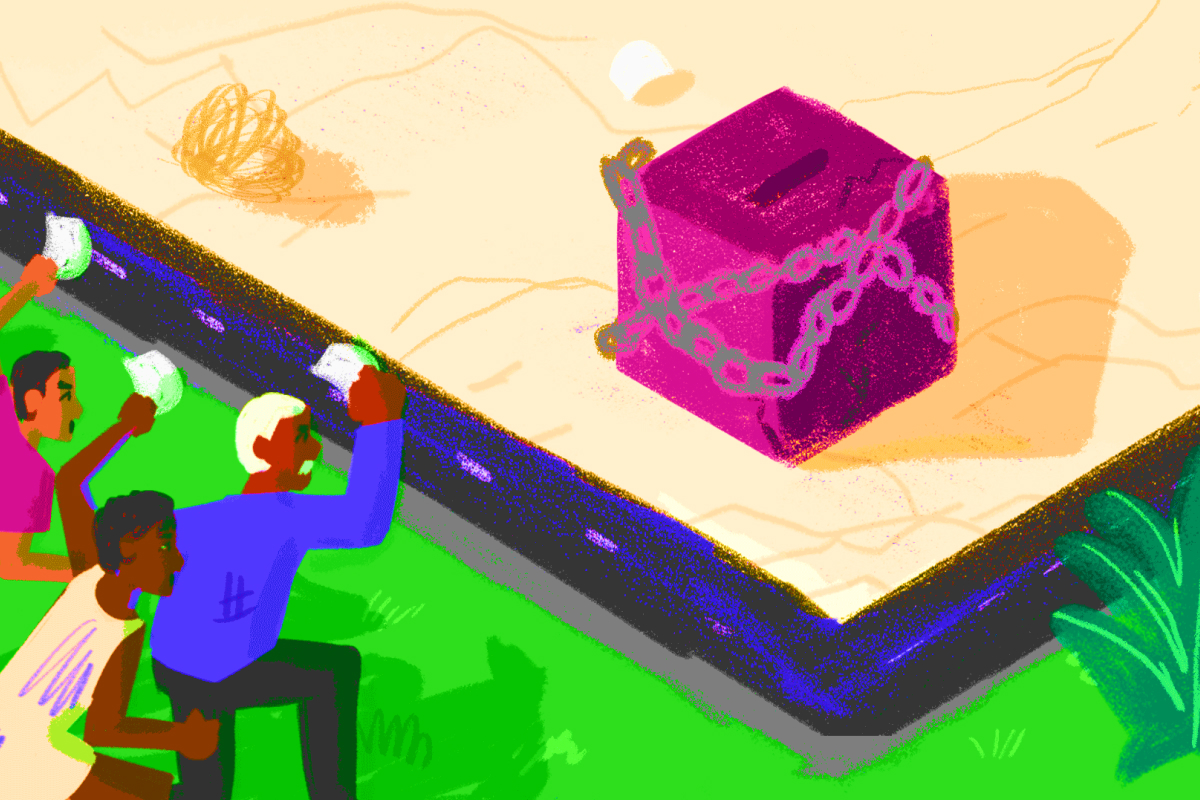
Voices of democracy in Mexico and Switzerland
Participatory democracy is still in its early days in Mexico, whereas Switzerland has longstanding experience in the field. Yet both countries pursue the same goal: building a more egalitarian and inclusive society.
What is direct democracy? How can those who feel excluded make themselves heard? When and how do models of participatory democracy emerge? And who are the people that drive them?
With these questions, a small group of journalists from the Mexican online newspaper Animal Político and the Swiss Broadcasting Corporation’s unit SWI swissinfo.ch set off to explore different experiences of direct democracy in both countries, in the context of the Global Forum on Modern Direct Democracy – which was held in Switzerland in 2022 and is taking place in Mexico in 2023. This article contains some of the findings of this research.
“When we talk about democracy, we are talking about opportunities. We are talking about a state where everyone has the same right to be heard and to feel that they are part of the community. This is something we still have to work on in Mexico,” says Greta Ríos, founder of Ollin, an organisation which, according to its own profile, is working to build a Mexico where the rule of law is the only rule, thanks to strong institutions and empowered citizens.
“Participatory democracy in Mexico is being born in a rather tumultuous fashion, like everything that is born in Mexico. We have to seize this opportunity to make the population fall in love with democracy,” says Ríos, whose NGO received the 2019 UBS Visionaris Award for Social Entrepreneurs.
The task is not an easy one. Mexican citizens have not forgotten the events that made them distrust the ballot box. Read here for an overview of this history which has marked the country.

More
A history of direct democracy in Mexico
Against this backdrop, many different citizen movements have called, in recent decades, for tools to participate outside the political machinery, in order to hold public servants accountable and be able to influence their decisions. One of the most representative and attractive mechanisms for citizens is the participatory budget.
In Mexico City, a tale of violence and attempted dispossession was behind this collective effort to defend a public park with the help of the participatory budget.

More
Participatory budgeting: how to prevent the destruction of a park
All 32 entities within the United Mexican States have introduced citizen participation instruments in the past decades.
In the state of Jalisco, one of the pioneers, such mechanisms have even proliferated. After starting out with three in 1998, the state added a further 13 in 2019. The Electoral and Citizen Participation Institute (known by its Spanish acronym, IEPC) of Jalisco has the task of making these 16 instruments known among the population and advising those interested in activating any of the tools.
Alba Rojas, a 21-year-old law student, thus decided, together with various LGTB groups, to start collecting signatures to launch a people’s initiative that would set a precedent in a very popular public park in her city, Guadalajara, where there had been a spate of transphobic acts.

More
Collecting signatures for diversity and against transphobia in Mexico
Although citizens in Mexico can activate the mechanism of the popular or citizens’ initiative by collecting signatures, they do not participate directly at the end of the evaluation process, as Mexican political scientist Martha Sandoval explains. This is also the case in other countries, such as Argentina and Brazil. “In other words, they do not take part in the final decision-making. In Mexico, the popular initiative is submitted to the law-making process in Congress, like any other legislative initiative”.
This is a significant difference compared to Switzerland, where the popular initiative, like the referendum, enables citizens to make their voices heard on specific issues and to summon voters to the ballot box to address a specific issue, without filters.
“These instruments help ensure a high level of citizen participation, and also reduce the power of the lawmakers, as we know that the people have the last word,” explains Andrea Caroni, a senator in the Swiss parliament.
“It makes us humbler, and creates a balance of power between citizens and the parliament. The people monitor us, they contradict us, and they give us impetus. We may comment on citizens’ initiatives in the parliament, but not block them; this changes the game completely”, the lawmaker adds.
The Swiss parliament has the right to draw up a counter-proposal. If the instigator of the initiative is satisfied with the counter-proposal, he or she withdraws the initiative; but if no compromise is reached, the decision is made at the ballot box.
“In Mexico, the only instruments that end with a citizens’ vote are popular consultations and mandate recalls,” explains Sandoval, who is doing a PhD in democratic studies at the University of Zurich.
Thus in Mexico, also at sub-national level, although various instruments of citizen participation start with the collection of citizen signatures of support, in the end they are not resolved by a popular vote. It is the authorities who finally decide.
This is the case in Jalisco State with the so-called plebiscite. In the experience of José, a citizen who attempted to use it to oppose a project by his city council, this instrument is fitted with “padlocks”, making it unusable.

More
Complex laws and ignorance: the obstacles that hinder citizen participation in Mexico
In Mexico, the authorities make more use of these instruments, such as citizen consultations, than the citizens themselves. According to Yanina Welp, a researcher on these participatory exercises in Latin America and other parts of the world, “some of these consultations organised by the authorities themselves can be very useful – when they are not aimed at extending mandates, granting more power or mobilising according to the interests of those in office, but deal instead with public policy issues”.
The mayor of Etzatlán in Jalisco, Mario Camarena González Rubio, agrees. “With the consultation, I feel that communication is direct with the people in the municipalities, and you can really understand what the citizens want to convey to you. What is more, it is easier to govern if you are transparent and put your programmes on the table. We have learned a lot with this kind of instrument.”
“In Switzerland or Uruguay this is not possible. The authorities cannot summon the citizens to ask them a question, be it binding or advisory. It is expressly forbidden for the executive branch – at local, sub-national or federal level – to call on the citizens ‘motu proprio’”, explains political scientist David Altman, co-director of a major international project that measures and compares the democracies of 200 countries (V-Dem).
“Direct democracy is a weapon for the citizens, not the authorities,” says Altman, who considers Switzerland to be exemplary in its use of direct democracy tools on a global scale.
Citizens and political figures in Switzerland are nevertheless also aware of the risks involved in using these instruments.
Suffice it to recall that, in Switzerland, the right to vote for women, proposed in the 1950s by the government but rejected by male voters box until 1971, and recent efforts to reduce CO2 emissions were quashed by popular vote – a fact that Antonio Hodgers, a member of the Geneva executive, regrets. The Argentinian-born environmentalist and former political refugee believes that there are fundamental rights that should not be addressed in direct democracy exercises.
“As I see it, democracy is a balance between majority decision and the defence of fundamental rights, and direct democracy in Switzerland is a very beautiful thing: anyone who collects the requisite citizen signatures can call the people to vote.”
Manuele Bertoli, a former cantonal lawmaker in Ticino and now a member of the canton’s executive, agrees with Hodgers. “In Switzerland, direct democracy also acts as a curb on the improvement of social conditions, because there have been many occasions when certain social innovations have failed to win a majority of the popular vote.”
“Direct democracy in Switzerland does not mean a plebiscite organised by the authorities themselves in order to see their ideas confirmed”, he adds.
“The world of direct democracy is multivariate and multicoloured, with many different institutions. Some are democratising, and others autocratising”, Altman points out. However, he qualifies, their use does not make a country better or worse. There are many states that do not have them, but rank at the top of the democratic development indices, such as Norway, New Zealand, Iceland and Sweden.
Altman warns that direct democracy is often born more of partisan interests than citizens’ demands, and that if people see that it is not working, they will opt for other ways of making their voices heard.
Today, these tools of participatory democracy exist in more than 100 countries. We close this article with a look at four specific examples from around the globe.

More
How direct democracy is practised in four countries
We invite you to take part in this debate, which is in ten languages, so we can learn about your experience in using these tools.
More


In compliance with the JTI standards
More: SWI swissinfo.ch certified by the Journalism Trust Initiative








